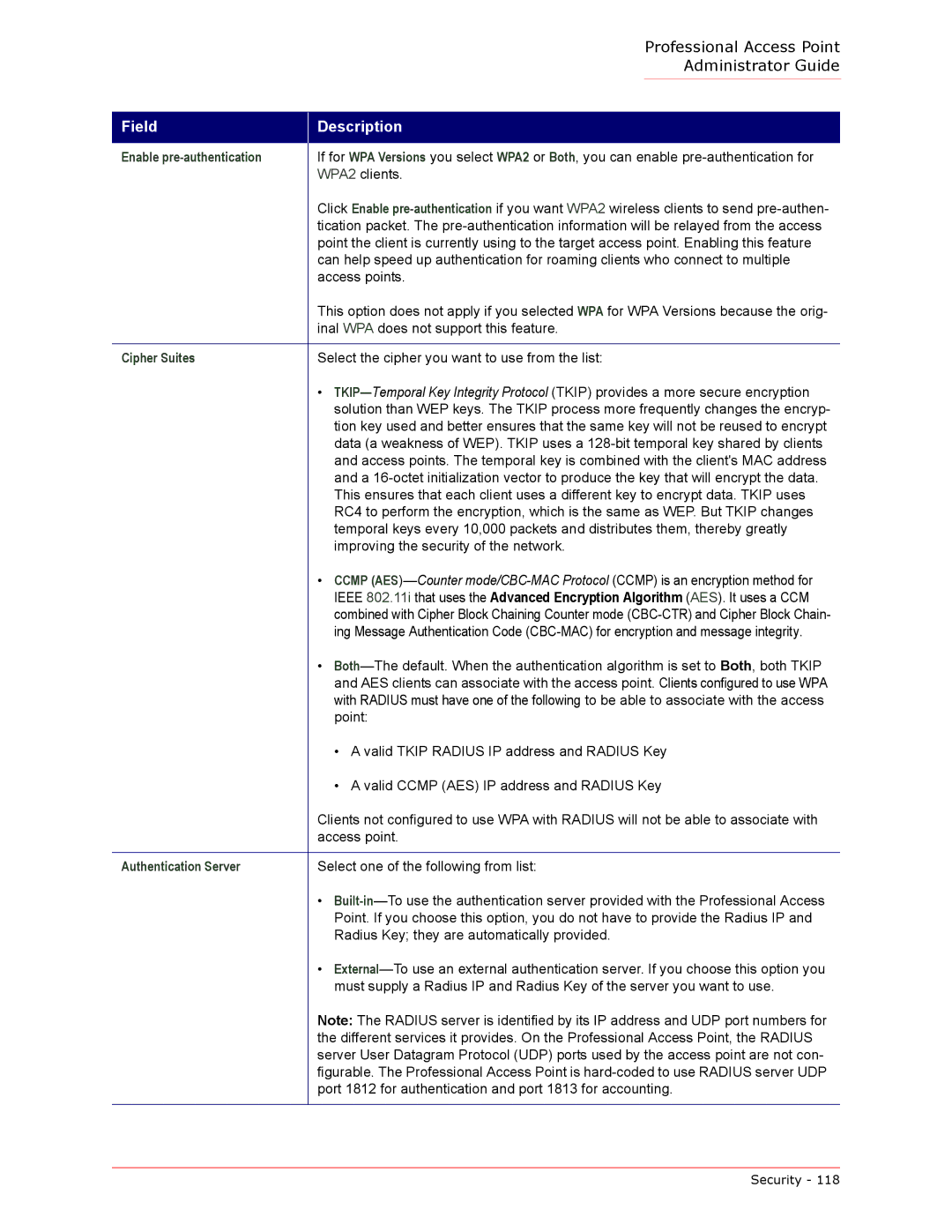
Professional Access Point Administrator Guide
Field
Description
Enable | If for WPA Versions you select WPA2 or Both, you can enable |
| WPA2 clients. |
| Click Enable |
| tication packet. The |
| point the client is currently using to the target access point. Enabling this feature |
| can help speed up authentication for roaming clients who connect to multiple |
| access points. |
| This option does not apply if you selected WPA for WPA Versions because the orig- |
| inal WPA does not support this feature. |
|
|
Cipher Suites | Select the cipher you want to use from the list: |
| • |
| solution than WEP keys. The TKIP process more frequently changes the encryp- |
| tion key used and better ensures that the same key will not be reused to encrypt |
| data (a weakness of WEP). TKIP uses a |
| and access points. The temporal key is combined with the client's MAC address |
| and a |
| This ensures that each client uses a different key to encrypt data. TKIP uses |
| RC4 to perform the encryption, which is the same as WEP. But TKIP changes |
| temporal keys every 10,000 packets and distributes them, thereby greatly |
| improving the security of the network. |
| • CCMP |
| IEEE 802.11i that uses the Advanced Encryption Algorithm (AES). It uses a CCM |
| combined with Cipher Block Chaining Counter mode |
| ing Message Authentication Code |
| • |
| and AES clients can associate with the access point. Clients configured to use WPA |
| with RADIUS must have one of the following to be able to associate with the access |
| point: |
| • A valid TKIP RADIUS IP address and RADIUS Key |
| • A valid CCMP (AES) IP address and RADIUS Key |
| Clients not configured to use WPA with RADIUS will not be able to associate with |
| access point. |
|
|
Authentication Server | Select one of the following from list: |
| • |
| Point. If you choose this option, you do not have to provide the Radius IP and |
| Radius Key; they are automatically provided. |
| • |
| must supply a Radius IP and Radius Key of the server you want to use. |
| Note: The RADIUS server is identified by its IP address and UDP port numbers for |
| the different services it provides. On the Professional Access Point, the RADIUS |
| server User Datagram Protocol (UDP) ports used by the access point are not con- |
| figurable. The Professional Access Point is |
| port 1812 for authentication and port 1813 for accounting. |
|
|
Security - 118
